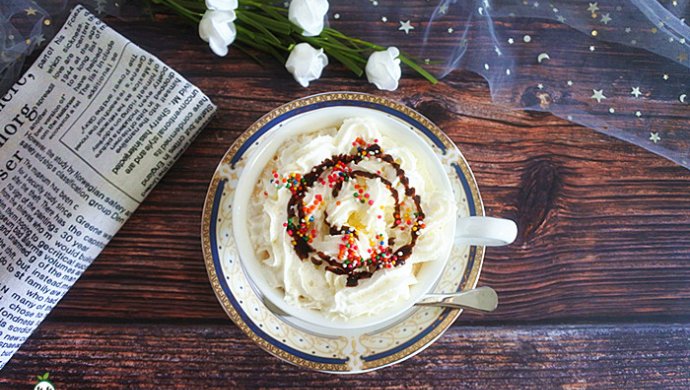How to make vienna coffee?


A Step-by-Step Guide to Brewing This Classic Coffeehouse Favorite
Contents
- Overview of Vienna Coffee
- Vienna Coffee Origins and History
- Benefits of Drinking Vienna Coffee
- Required Equipment for Making Vienna Coffee
- Vienna Coffee Beans: What to Look For
- Step-by-Step Vienna Coffee Brewing Instructions
- Grinding the Vienna Coffee Beans
- Pre-Heating the Server and Cups
- Brewing the Vienna Coffee
- Frothing the Milk
- Assembling the Vienna Coffee
- Variations and Customizations
- Common Questions and Answers About Vienna Coffee
- Final Suggestions for Enjoying Vienna Coffee
Overview of Vienna Coffee
Vienna coffee is a specialty coffee drink with a rich history dating back to the coffeehouses of 19th century Vienna, Austria. Characterized by its mild, elegant flavor, velvety texture, and whipped cream topping, the Vienna coffee showcases the delightful harmony between high-quality coffee beans and fresh, steam-frothed milk.
Unlike intensely robust espresso drinks, Vienna coffee highlights the natural sweetness and nuanced flavors of the coffee beans. With its creamy texture and cappuccino-style foam layer, Vienna coffee bridges the gap between black coffee and espresso-based milk drinks. When prepared properly with care and skill, a well-crafted Vienna coffee is a luxurious coffeehouse treat.
This step-by-step guide will teach you how to brew smooth, gently-sweetened Vienna coffee from the comfort of your home. We’ll cover everything from choosing quality beans to frothing the milk to pulling the perfect shot. With a little practice and quality equipment, you can master the techniques of Viennese coffee culture. So release your inner barista and let’s get started!
Vienna Coffee Origins and History
The Vienna coffee style has its origins in the coffeehouses of 19th century Vienna, Austria. During this prosperous era, Vienna’s cafés became cultural hubs filled with artists, musicians, and intellectuals who would spend hours discussing ideas over coffee. The Viennese coffee style developed as both an art form and a reflection of local tastes.
Unlike the intense espresso roasts favored in Italy, Viennese coffees were brewed using a milder roast to better highlight the coffee’s natural aromatic qualities. The beans were ground finer to infuse more flavor. Milk and whipped cream were added to soften bitterness and acidity. The result was a smooth, velvety coffee that encouraged relaxation and conversation. This coffeehouse tradition endures in Vienna today.
The Vienna coffee itself is something of a bridge between American black coffee and the milk-based espresso drinks of Italy. It consists of a single shot of gently sweetened espresso topped with whipped cream. The milk is frothed but not foamed, resulting in a thinner, warmer foam layer compared to cappuccino. The drink highlights the flavor clarity of the coffee while the cream rounds out any harsh edges.
The Vienna coffee spread from Austria to cafés throughout Europe in the early 20th century. In the United States, it was popularized by coffeehouse chains like Starbucks. However, an authentic Vienna coffee stays true to its Viennese roots by using high-quality beans and fresh milk froth in harmony.
Benefits of Drinking Vienna Coffee
Besides being delicious, Vienna coffee offers several health and sensory benefits:
- Provides steady energy and alertness from caffeine without intense jitters
- Stimulates digestion and metabolism
- Contains antioxidants that may reduce inflammation and promote heart health
- Fresh milk adds calcium for stronger bones and protein for cell repair
- Experience comforting café flavors without strongly bitter or acidic flavors
- Frothy, velvety texture is very palatable and soothing
- Distinct aroma profiles can enhance concentration
- Following proper brewing techniques provides mental engagement
Milder roasted specialty coffee like that used in Vienna coffee tends to be gentler on digestion compared to darker, oilier roasts. The milk also buffers the acidity. This makes Vienna coffee a good option for those with sensitive stomachs.
The lighter roasts contain less caffeine than French roast or Italian espresso. A single shot of Vienna coffee can provide sustained energy without intense “peaks and crashes.” The frothy milk adds a comforting quality as well.
Overall, Vienna coffee is an excellent way to enjoy high-quality coffee beans with the soothing richness of steamed milk. Taken in moderation, it can be part of a healthy and well-balanced coffee routine.
Required Equipment for Making Vienna Coffee
Brewing an authentic Vienna coffee requires quality equipment and some specialty barista tools. With the right gear, you’ll have total control over every step of the brewing process. Here is the essential equipment you’ll need:
- Burr coffee grinder – A consistent, even grind is essential for proper extraction. Blade grinders often produce an uneven mix of large and fine grounds. Look for a quality burr grinder that allows adjusting the grind size. Conical burr grinders offer the most uniform grind.
- Espresso machine – Making real Vienna coffee requires freshly pulling espresso shots, not relying on pre-brewed concentrate. Look for a machine that can produce adequate pressure and has good temperature control. More affordable options include manual lever espresso machines.
- Steam wand – The steam wand froths the milk to create the essential foam topping. Many espresso machines come with one built-in. Standalone steam wands can also be purchased.
- Metal milk pitcher – These special pitchers allow you to properly steam and froth milk. Look for stainless steel pitchers around 20 oz capacity. The spout should have a wide mouth for free pouring.
- Digital kitchen scale – Weighing coffee beans and espresso shots helps control variables for a consistent product. Scales that are accurate to 0.1 gram are ideal.
- Knock box – This receptacle collects discarded coffee grounds knocked out of the espresso portafilter. It keeps your countertop tidy.
- Coffee tamper – Tamping compresses the ground coffee into a firm, even puck for optimal espresso extraction. Look for a steel tamper that fits your filter basket snugly.
- Thermometer – Monitoring milk temperature ensures you are steaming and frothing it properly for the Vienna style. Digital thermometers provide an accurate readout.
- Pre-warmed cups – Pre-warming maintains the coffee’s optimum serving temperature. Use hot water or leave upside down on top of the espresso machine.
With this professional-grade equipment, you can achieve coffeehouse quality Vienna coffee!
Vienna Coffee Beans: What to Look For
One of the most important elements for Vienna coffee is using specialty grade coffee beans. The beans should be high-quality Arabica with a medium roast and a flavor profile that complements the Viennese style. Here are some key things to look for when selecting Vienna coffee beans:
- Arabica beans – Avoid cheaper robusta beans which can taste harsh. Opt for smooth, nuanced 100% Arabica coffee.
- Medium roast – The beans should have a rich brown color with no oiliness. Medium roasts preserve sweetness and aromatics.
- Mild acidity – Vienna coffee tastes best with a bean whose natural acidity is smooth and balanced, not sour or tangy.
- Flavor notes – Flavor profiles like chocolate, nut, and caramel complement the Vienna coffee experience.
- Fair trade – Seek out ethically sourced beans to support sustainable growing practices.
- Freshly roasted – Check the roast date and buy from roasters who use peak fresh beans. Try to use beans within 2 weeks of roasting.
- Whole bean – Grind beans right before brewing to maximize freshness and flavor.
Experiment with different specialty coffee beans to find your perfect Vienna coffee match. Local roasters are a great source for optimal freshness.
Step-by-Step Vienna Coffee Brewing Instructions
Now that we’ve covered the key equipment and coffee beans, let’s go through the brewing process step-by-step. We’ll address everything from dialing in your grinder to frothing the milk.
Grinding the Vienna Coffee Beans
- Weigh out 17-18 grams of fresh whole bean Vienna coffee. Having an exact weight helps control variables.
- Adjust your burr grinder to a fine-medium grind about the texture of kosher salt. You want a grind that is fine but not powdery.
- Grind the beans right before brewing for full flavor and aroma. Only grind what you will use immediately.
- Transfer the freshly ground coffee to the portafilter basket and distribute it evenly.
Pre-Heating the Server and Cups
- Place the serving vessel on top of the espresso machine so residual heat from the boiler can warm it up. A traditional serving vessel has two chambers.
- Warm your coffee cups by rinsing them out with hot water from a kettle. Leave them inverted.
- This pre-heating helps maintain the coffee’s optimal 180-185°F (82-85°C) serving temperature.
Brewing the Vienna Coffee
- Tamp the coffee evenly using 30-40 lbs of pressure to form a firm, even puck. This prevents water channeling around the edges.
- Lock the portafilter into the group head and start the brew process. The extraction should take 25-30 seconds.
- Stop the brewing when you reach 1-1.5 oz of rich, caramel-colored espresso. The crème should be a hazelnut hue.
- Add 0.5-1 teaspoon of sugar while the espresso is hot to help it dissolve. You can adjust to taste.
- Gently swirl to incorporate. The sugar balances bitterness and highlights sweetness.
Frothing the Milk
- Start with cold, fresh whole milk around 8 oz. Whole milk makes the creamiest froth.
- Purge the steam wand then position the tip 1-2 inches below the milk’s surface near the side.
- Turn on the steam dial and raise the tip slightly until the milk is spinning rapidly in a vortex.
- Heat the milk to 160-165°F (71-74°C). Use a thermometer to monitor temperature.
- Turn the steam off when desired temp is reached. The milk should have doubled in volume.
- Gently swirl the pitcher to recombine the layers for silky, glossy texture.
Assembling the Vienna Coffee
- Pour the frothed milk into the empty side of the serving vessel.
- Carefully pour the espresso through the center to “float” it over the milk.
- Top with a spoonful of lightly whipped cream. For traditional flair, hold the spoon high and allow cream to fall.
- Dust the top lightly with cocoa or cinnamon (optional).
- Serve immediately while still hot. Enjoy the interplay of flavors!
Variations and Customizations
Once you’ve mastered the traditional Vienna coffee, try experimenting with some tasty tweaks:
- Substitute half of milk with an alternative like almond or oat milk.
- Add flavors to cream like vanilla, maple, or amaretto.
- Use raw cane sugar, honey, or agave nectar for different sweetness.
- Garnish with chocolate shavings, crushed candy canes, or nutmeg.
- Serve in clear glass to showcase the layers.
- Brew espresso directly into serving cup for single servings.
Play with ratios too. Add an extra shot of espresso if you prefer more intense coffee flavor. Use less milk and foam for a “cortado” variation. Follow your tastes and get creative!

Common Questions and Answers About Vienna Coffee
If you’re new to Vienna-style coffee, chances are you have some questions. Here are answers to some frequently asked questions:
What’s the difference between a Vienna coffee and a cappuccino?
Both contain espresso and frothed milk but there are some key differences:
- Cappuccino milk is heavily steamed and foamed while Vienna milk is gently frothed with little foam
- Cappuccinos have equal parts espresso, milk, and foam. Vienna coffee has mostly steamed milk with floated espresso.
- Cappuccinos use robust dark roast espresso compared to Vienna coffee’s milder roasts
- Vienna coffee is topped with whipped cream while cappuccinos leave the foam surface exposed
Can I use instant coffee instead of espresso?
It’s best avoid instant coffee if you want an authentic Vienna coffee. Freshly pulled espresso is integral to the recipe. Pre-brewed or instant coffee sacrifice too much flavor and aroma.
What milk alternatives work?
The most successful substitutes are nut milks like almond milk or oat milk. Coconut milk is too thin while soy milk tends to have beany flavors. Make sure to use milk alternatives fortified with calcium and vitamin D. Dairy-free milks froth differently so experiment.
Is the Vienna coffee vegan?
Traditionally Vienna coffee uses dairy milk and cream so is not vegan. However, it can be adapted to be completely vegan by using plant-based milk and coconut whipped cream or foamed soy.
Can Vienna coffee be decaf?
Yes, decaffeinated beans will still produce an authentic Vienna coffee experience. Opt for a specialty decaf like Swiss water process that retains flavor best. The milk and sweetness also help round out the flavor if using decaf.
Final Suggestions for Enjoying Vienna Coffee
This coffee is meant to be slowly savored, not gulped down. Beyond the brewing, here are some final tips for making your Vienna coffee experience special:
- Find a cozy space away from distractions to truly savor the coffee’s aroma and flavor.
- Drink from an elegant mug or delicate cup and saucer. Elevated vessels boost experience.
- Pair with a light pastry like a scone or biscotti. Don’t overwhelm the coffee flavors.
- Add a time buffer after drinking to savor residual flavors left on palate.
- Obtain quality beans from local specialty roasters for peak freshness.
- Dial in your grind size for your equipment and adjust as needed.
- Keep a brewing journal to record recipes, observations, and innovations.
- Invite a friend to share in the relaxing Vienna coffee experience together.
- Try different milks, sweeteners, and beans until you find your perfect combination.
Mastering this coffee is a rewarding journey. Sip slowly, refine your technique, and enjoy the charming heritage of Viennese café culture one velvety cup at a time. Let yourself be transported. Prost!




